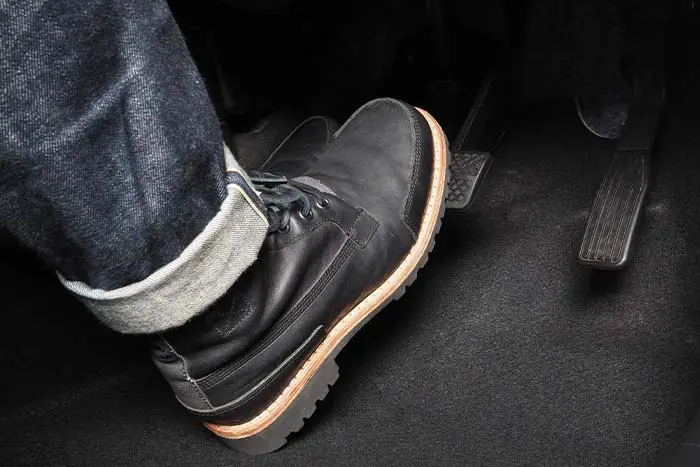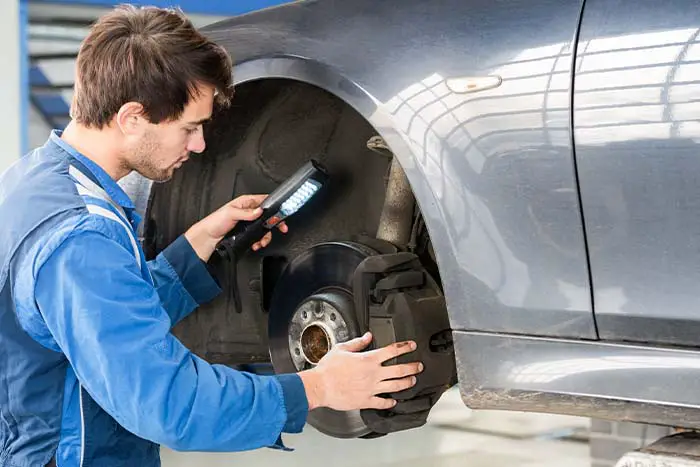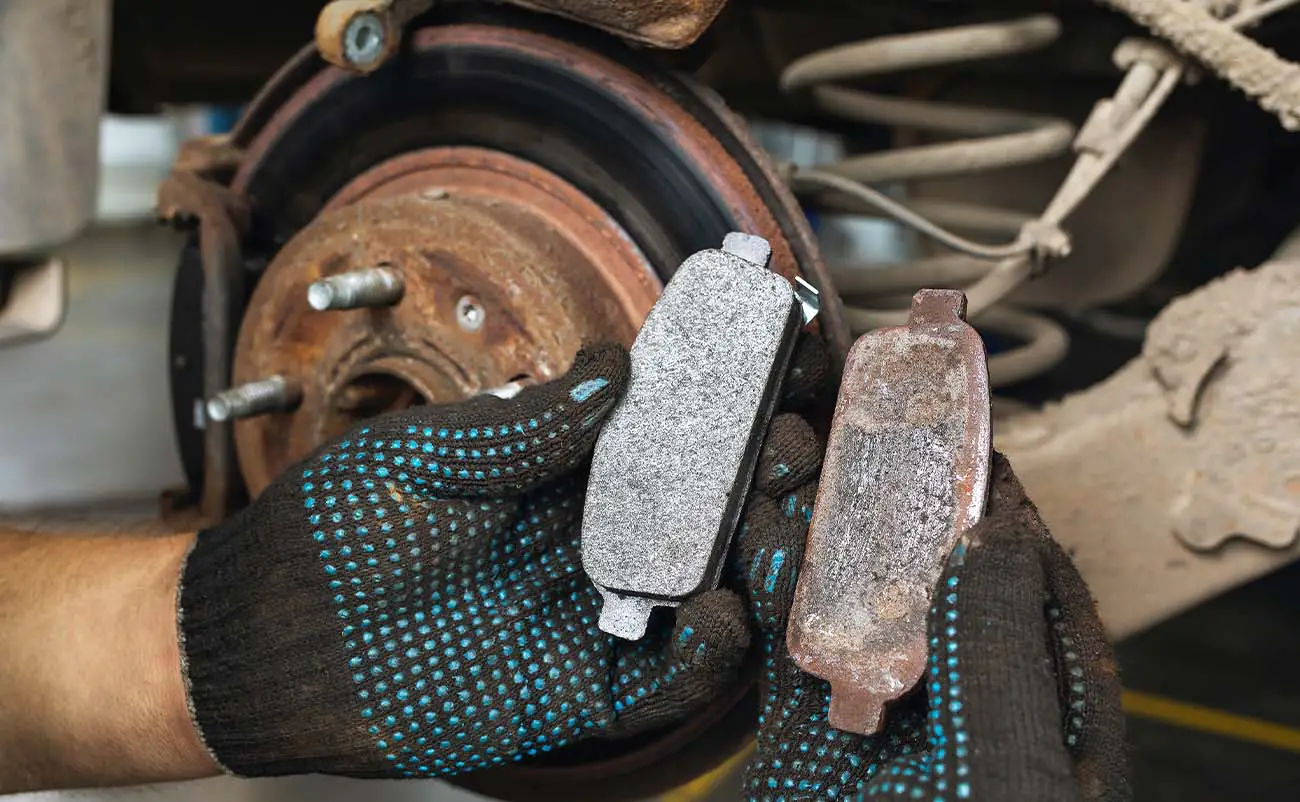Brake pads are crucial for your safety while driving. As a driver, you know just how important brake pads are, which is why you want to make the right decision as a buyer. The most important questions most drivers have regarding brake pads are how long they last and when they should be replaced. We will answer all your questions about brake pads, including how long a brake pad is typically supposed to last, factors that influence their longevity, warning signs of worn-out brake pads, and what could happen if you leave these symptoms unattended.
Table of Contents
How Long Do Brake Pads Last?
Since brake pads are consistently subjected to a lot of pressure, they wear down over time. Ideally, the brake pads should last anywhere from 25,000 to 70,000 miles. However, the longevity of your brake pad is hinged on a few factors — driving habits, driving conditions, the material composition of the brake pad, and the condition of the brake assembly.
You should know that these factors could drastically impact the pad’s longevity. Generally, the front brake pads wear out faster than the rear brake pads. The explanation for the accelerated deterioration of the front brake pad is simple, extra weight! Your vehicle’s weight is evenly distributed to all the wheels when driving. However, extra weight is transferred to the front wheel while braking, which puts more pressure on the front brake pads, causing them to wear out sooner.
You should also examine your brake lines and brake assembly for signs of wear whenever you replace the brake pads. The wear of other brake system components will impact the performance and longevity of the new pads. You want to ensure that the brake rotors, caliper, brake line, and other components are in good condition. Ideally, you should replace your brake rotors and calipers after 70,000 miles and brake fluid every two years or 30,000 miles.
Symptoms of Worn Brake Pads

So, how can you tell that your brake pads are worn out and should be replaced? Diagnosing a worn brake pad is pretty straightforward since there are some easy telltale signs to look for. Discussed below are symptoms of worn-out brake pads.
— Squealing Noise
This is the most common indicator that your brake pads are wearing out. Most brake pads usually have a wear indicator that begins to rub off on the rotor when the brake pad surface is worn to a certain depth. When the brake pads are significantly worn, the wear indicator rubs off on the rotor every time you engage the brake causing the squeaking noise.
— Grinding Sound
Grinding brake noise is never a good sign and is usually a cry for help. The initial squealing warning could develop into grinding sounds if the brake pads are allowed to erode completely — the direct contact between the brake rotor and caliper results in the grinding noise.
While something as little as rocks or debris lodged between the rotor and caliper could cause the grinding sound, you should investigate this symptom as there is also a high possibility of entirely worn brake pads.
— Longer Stopping Distance
Intensely worn brake pads impact your vehicle’s stopping power. Your vehicle’s braking system relies on the friction generated by the contact between the brake pad surface and the brake rotor to slow down the wheel movement. When the brake pad is intensely worn, the contact doesn’t generate as much friction as a fully intact pad, leading to a prolonged braking distance.
— Vibrating Brake Pedal
Another indication of an entirely worn brake pad is a vibrating brake pedal during braking. While this symptom could be attributed to other factors, including improperly aligned wheels or other faulty components in the braking system, worn-out brake pads are top on the list. Engaging your brakes should be a seamless operation. So, when your brake pedal starts to shake, vibrate or rumble when you step on it, it is a warning that you need a brake service.
— Thin Pad Material
The recommended thickness of a functional brake pad is 6.4 mm (¼ inches). Anything below this would impede the proper functioning of the brake pads. Since the brake pad can be seen through the wheel, a very simple yet practical way of measuring its thickness is by looking through the wheel. If it is thinner than the recommended thickness, it’s a sign that the pads are reaching the end of their lifespan and should be replaced.
Whenever you notice any of the following symptoms, it indicates a worn-out brake pad and should be promptly replaced. It is best to leave the job up to a dealership’s service center if you lack the mechanical know-how of the brake assembly, as modern brake systems are a bit complex and could easily go wrong.
Brake Pad Replacement Cost

So, how much does a brake pad replacement cost? The cost of replacing brake pads should be around $250 per axle, including parts and labor. Generally, most brake pads cost about $35 to $150, with labor costs ranging from $75 to $150 per axle.
However, some factors might affect the final price of this repair. As you might imagine, the brake pad replacement of a Mercedes-Benz or BMW would cost more than that of a Japanese vehicle because the replacement parts of European vehicles are quite expensive. Besides pricey parts, European vehicles are also complex, and switching out the pads would require more time, resulting in higher labor costs.
You should also know that replacing other brake system components alongside the brake pads would inflate the cost of parts and labor, thus impacting the final cost. So, you don’t want to drive for long on worn-out brake pads as it puts your brake rotor and caliper at risk of damage. You can check out our comprehensive guide on brake pad replacement cost for more information.
Performing Your Own Brake Service
Performing your brake service yourself will help you save on labor costs. Most times, replacing the brake pads may be all you need when servicing your brakes. However, you need to do a rotor inspection every time you replace the brake pads to ensure they are in good condition. While replacing the brake pads is a straightforward procedure, you want to ensure you get the job done with precision and accuracy because you don’t want your brakes stalling.
You will first need to remove the wheel to access the brake assembly. Using a wrench, remove the slider bolts holding the caliper in place and pull out the caliper. Removing the caliper would expose the brake pads, take off the pads and examine them for uneven wear patterns. Uneven wear is an indication of an issue with either the caliper, rotor, or caliper piston.
If you are replacing the rotor alongside the pads, remove the old rotor, and clean the mounting surface with a wire brush and brake cleaner. Prime both sides of the new rotor with brake cleaner to remove the grease and leave it to dry. Once all the grease is off, slide the rotor onto the mounting surface.
Inspect the caliper and piston for fluid seepage, and in the absence of any, proceed to compress the piston using a c-clamp. Apply lubricant as specified and install the new brake pads with the wear sensor going on the inner side of the caliper. Install the caliper and tighten the slider bolts to recommended factory specifications. Install the wheel and repeat the process on the other axle. Some specifics may vary, and you should refer to your owner’s manual for more information.
The Bottom Line
Your brake pads play an important role in slowing down your vehicle. Although these pads could last up to 70,000 miles, a few factors impact their durability, including driving style, driving conditions, material composition, and the condition of the brake assembly. You should also note that front brake pads wear down faster than the rear ones. The good news is that wear indicators begin to notify you once the pad is due for replacement — this mainly applies to modern vehicles.
Frequently Asked Questions
What can happen if I don’t replace my brake pads?
Driving with worn brake pads could damage other components in the brake assembly and put you at risk of an accident. The brake pad prevents direct contact between the brake caliper and rotor. If you ignore the warning signs, the pad wears down entirely, allowing the brake caliper to come into direct contact with the rotor. The direct contact of both components would damage them. If the situation persists, the friction generated by the caliper and rotor contact could cause the brake system to overheat and ultimately fail.
What are some factors that affect how long brake pads last?
The following factors impact the durability of your brake pads:
— Driving Habits
Driving habits significantly impact your brake pad longevity. Considering the weight of an average car and how fast the wheels rotate, bringing a vehicle to a stop or slow down requires considerable effort. If you have the habit of tailgating other vehicles or speeding excessively, you would often make abrupt stops, putting even more stress on your brake pads. These extreme pressures exerted while braking accelerates the brake pad wear.
— Driving Conditions
Driving conditions are often overlooked when discussing factors that impact brake pad life. Unlike interstate or highway driving, the unending traffic in the city prompts the frequent application of the brake, which accelerates the brake pads’ deterioration.
— Material Composition
Brake pads have varying material compositions with different stress and friction resistance. Generally, there are three types of brake pads — organic, ceramic, or semi-metallic. The material composition of these pads differs and plays a crucial role in their longevity. Ceramic brake pads are designed for high-performance and last longer than others. Semi-metallic pads last longer than organic pads and are mostly used in large SUVs or trucks as they are best suited for heavy-duty. Organic brake pads are made for daily driving and wear down faster than ceramic or semi-metallic ones.
— Condition Of The Brake Assembly
Your brake pads are a part of the brake assembly and collaborate with other components for proper functioning. If your brake rotor or caliper is in poor condition, your brake pad will likely wear down faster than it should. When replacing your brake pads, you must always examine the brake assembly for brake wear.
How often do brake pads need to be replaced?
Your brake pads should be replaced whenever they begin to show signs of wear. There is no definite timeframe for brake pad replacement. While some vehicles may need brake pad replacement as early as 25,000 miles, others may travel well over 60,000 miles before needing brake service. The major factors impacting the lifespan include your driving habit and the material composition of the brake pad. Organic brake pads will wear down faster than semi-metallic, or ceramic pads due to their soft material composition.

